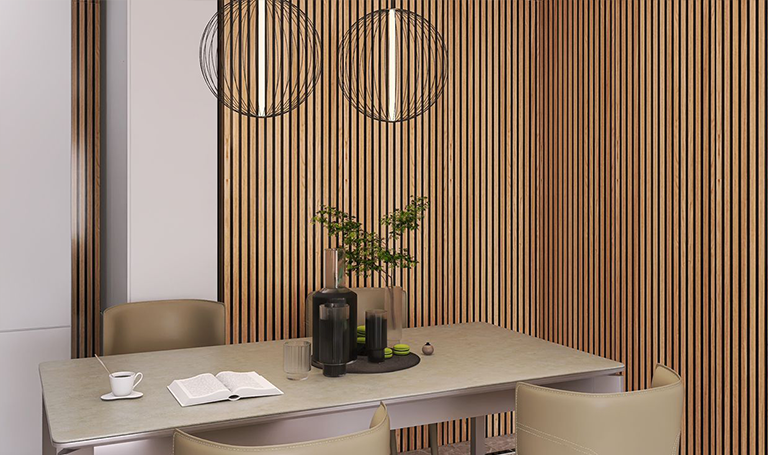
Why Wall Panels Are a Better Choice Than Paint
Homeowners and interior designers frequently are confronted with a well-known conundrum when it comes to the process of finishing interior walls: wall panels or paint? Paint has been the usual option for a long time due to the fact that it is easily accessible and straightforward. However, wall panels are rapidly becoming the solution of choice for individuals who are trying to add both flair and functionality to their homes. The purpose of this essay is to investigate the ways in which wall panels outperform paint not just in terms of aesthetics but also longevity, insulation, and upkeep.
The Visual Impact: More Than Just Color
The visual attraction of wall panels is just incomparable to that of paint because of their substantial depth. Panels, which come in a wide variety of textures, patterns, and finishes, lend an air of sophistication to the space they are installed throughout.
Rich Textures and Designs
Unlike paint, which is limited to flat or glossy finishes, wall panels come in various materials like MDF, PVC, natural wood, and even fabric. Unlike traditional painted walls, wall panels offer textured finishes that enhance the ambiance of any room
. These materials allow for:
- 3D textures that play with light and shadow
- Intricate patterns such as fluting, slats, or geometric shapes
- Material-specific finishes like matte wood grains or glossy laminates
Style Versatility
Wall panels suit a broad range of interior design themes. Whether you prefer rustic farmhouse, sleek modern, or classic Victorian, there’s a panel style that matches:
- Wood panels for warmth and a natural look
- PVC panels for a clean, contemporary style
- Wainscoting and beadboard for traditional or coastal interiors
Practical Benefits That Outperform Paint
Despite the fact that wall panels have a really nice appearance, their benefits extend much beyond that. In addition to this, they provide a number of practical advantages that paint simply cannot compete with.
Long-Lasting Durability
Wall panels are built to last. Most are resistant to chipping, cracking, and peeling—common issues with painted walls. Once installed:
- Panels can last for decades with minimal signs of wear
- Many are moisture-resistant and suitable for kitchens and bathrooms
- High-impact resistance makes them ideal for high-traffic areas
Easy Maintenance
Painted walls often require touch-ups and cleaning, especially in busy homes. Wall panels simplify upkeep:
- Wipe-clean surfaces for panels made of PVC or laminated wood
- Stain resistance in most panel materials
- No need for frequent repainting or patching up scratches
Better Insulation and Soundproofing
Wall panels can improve your home’s energy efficiency and comfort. One of the most overlooked benefits of wall panels is their ability to improve indoor acoustics
without major construction. Unlike a thin coat of paint, panels add a layer of insulation:
- Helps retain indoor temperature, reducing energy bills
- Improves soundproofing between rooms
- Minimizes condensation and wall dampness
Comparison Table: Wall Panels vs. Paint
| Feature | Wall Panels | Paint |
|---|---|---|
| Aesthetic Variety | High (textures, patterns) | Limited to color and sheen |
| Durability | Excellent (resists damage) | Moderate (prone to chipping) |
| Maintenance | Low (easy to clean) | High (requires touch-ups) |
| Moisture Resistance | Yes (especially PVC panels) | No (peels or bubbles in humidity) |
| Installation Time | Moderate | Fast |
| Cost (Initial) | Higher | Lower |
| Cost (Long-Term) | Lower (less frequent upkeep) | Higher (repainting required) |
| Insulation Benefits | Yes | No |
| Design Customization | Extensive | Minimal |
When Wall Panels Make the Most Sense
While wall panels work in nearly any space, there are specific areas where they are particularly beneficial.
High-Traffic Areas
Hallways, entryways, and family rooms benefit greatly from the durability and style of wall panels. These are zones where painted walls are likely to scuff and stain.
Moisture-Prone Rooms
Bathrooms and kitchens face frequent exposure to steam and splashes. PVC wall panels provide a waterproof surface that paint can’t offer. Many homeowners choose wall panels for their insulation properties, helping regulate room temperature year-round
.
Feature Walls and Accents
Want a statement wall that stands out? Wall panels provide texture and dimension that simply can’t be replicated with paint, making them perfect for:
- TV walls
- Headboards
- Dining room focal points
Frequently Asked Questions (FAQ)
Are wall panels more expensive than paint?
Initially, yes—wall panels generally have a higher upfront cost compared to paint. However, they often prove more economical over time due to their longevity and low maintenance requirements.
Can wall panels be installed over existing painted walls?
In most cases, yes. As long as the surface is smooth and free from moisture or damage, wall panels can be installed directly over painted drywall using adhesives or fasteners.
Are wall panels suitable for bathrooms?
Absolutely. PVC wall panels in particular are waterproof and mold-resistant, making them ideal for use in bathrooms, laundry areas, and other moisture-rich environments.
How long do wall panels last?
With proper installation and care, wall panels can last for decades—often far outlasting painted surfaces, which may need repainting every 3–5 years.
Do wall panels require professional installation?
While professional installation ensures the best results, many wall panel systems are designed for DIY use and come with easy-to-follow instructions.
Discover how strong branding strategies can help promote wood panel products online.